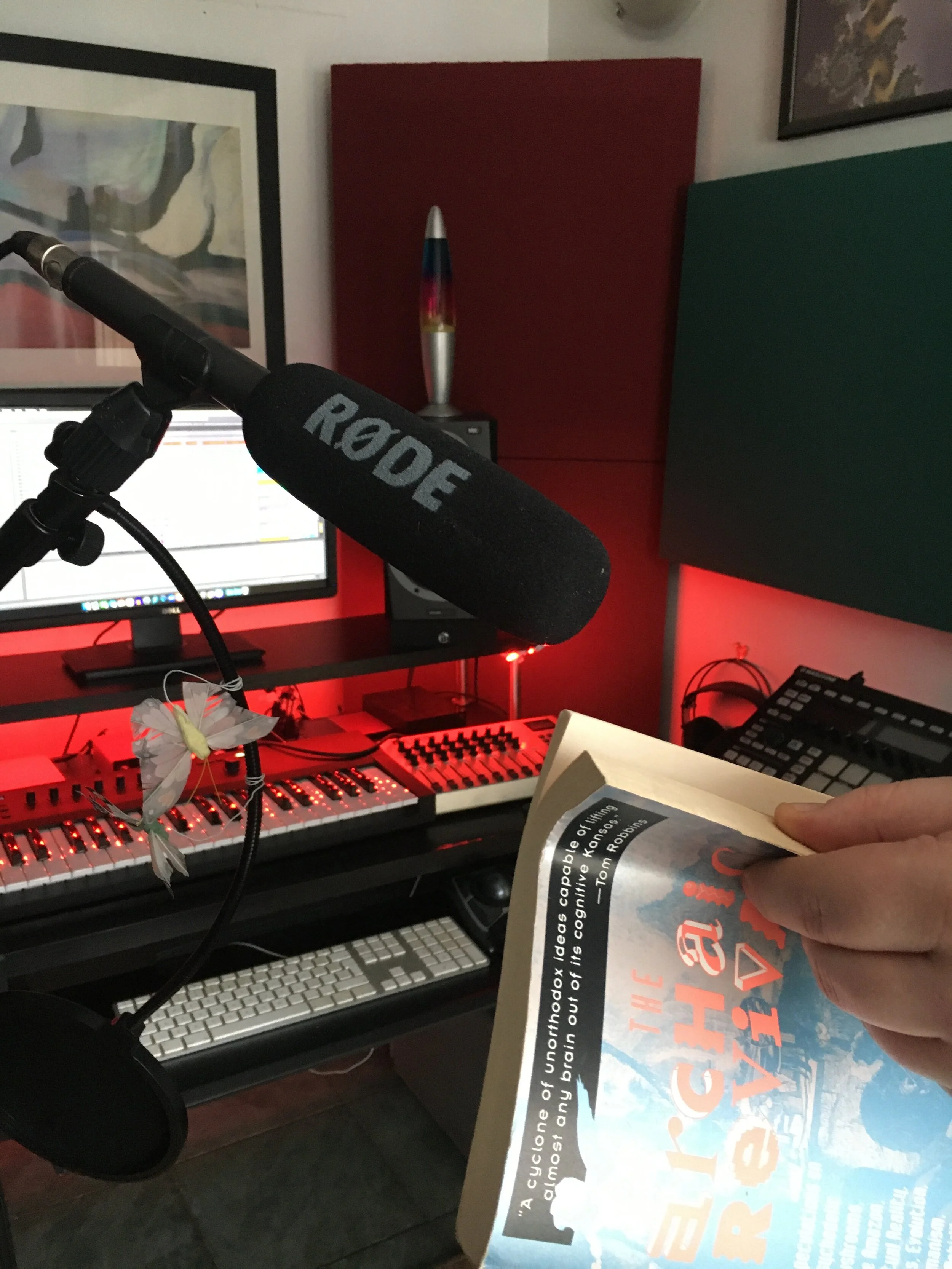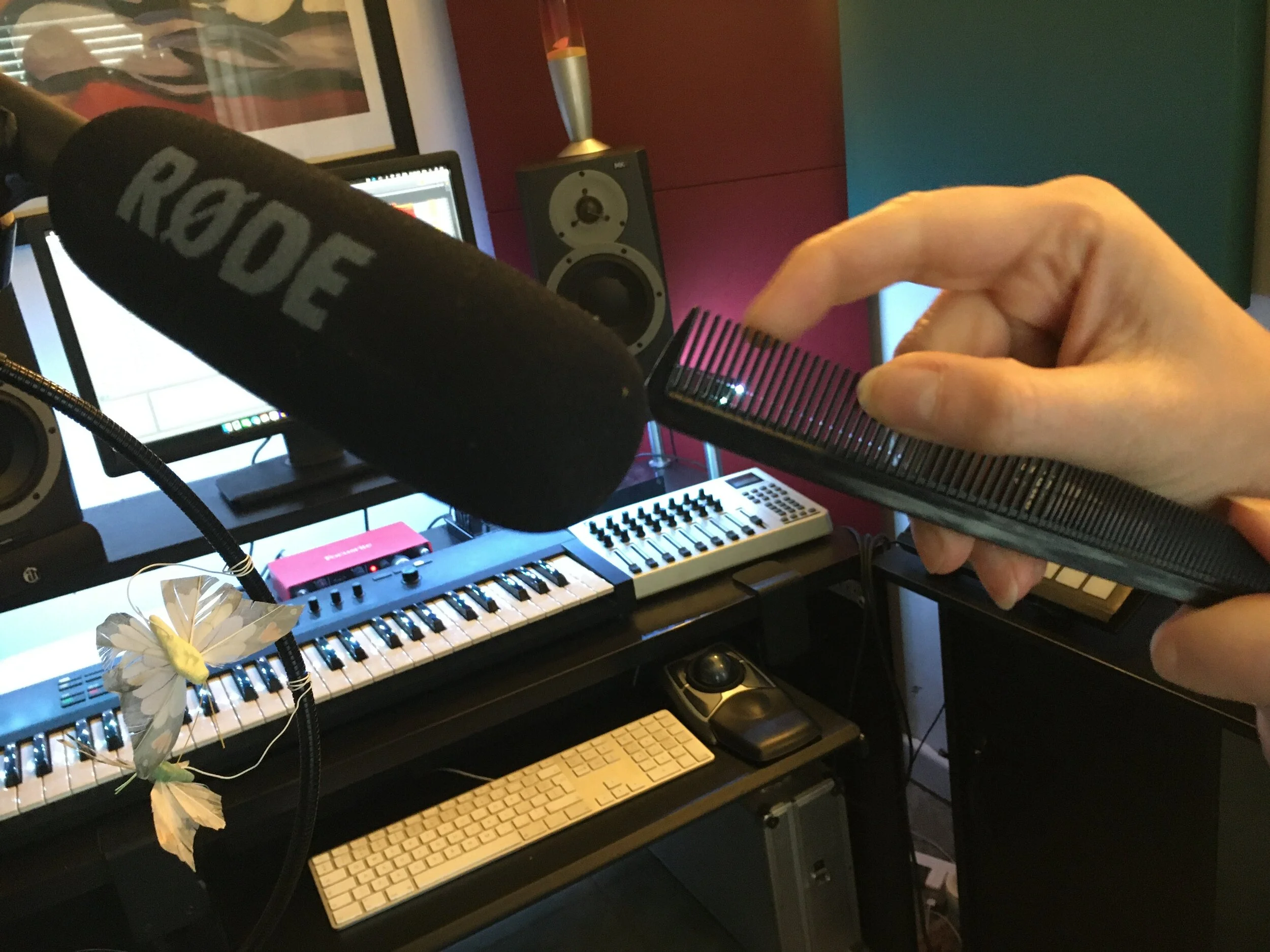Recording foley and a moth flew in and took a closer interest in what I was doing.
Foley Recording & binaural sound
by Sound Designer & Composer Stephen Hull
Foley is the art of reproducing sound effects to enhance the audio in a film, video or any other digital media. Often using ordinary objects to create extraordinary sounds, I’ve been using Foley recording techniques throughout my career. But for The Storm Shepherd, Binaural recording was also used alongside Foley techniques to create the immersive sound effects that bring the story and the world of The Storm Shepherd to life.
The Neumann KU 100 Dummy Head is a unique piece of kit that mimics how humans perceive sound. With two tiny high quality condenser microphones placed inside each ear of the ‘dummy head’ the shape of the head, the contours of the face and the shape of the ears all effect how sound waves are received by the microphones, just as our own ear shape and facial structures affect how our ears receive and affect the sound we hear. The Dummy Head replicates the environment it was used to record in really well. So well in fact that it can be quite an eerie experience listening back to the recording. During rehearsals for the performance, the Dummy Head was recording the sound of the actors in the room, and when I listened back days later when checking the recordings, I was immediately transported back into the space where the recordings took place. Instinctively I turned my head to the direction of the actors who of course were not in the room with me, but my brain insisted that they were. Quite a handy tool when you want to immerse an audience completely into a performance.
The Neumann KU 100 Dummy Head for Binaural Recording
Recording squelching mud sounds with Edie using the KU 100 Dummy Head
Recording the sound of the beating wings of the moths in the story required a fluttering sound that could move around the head of the audience. In the past, I’ve created the sound of birds wings by recording the sound of flapping oven gloves. The flicking pages of a book provide a much more delicate sounding beating wings sound, and running fingernails back and forth along the teeth of a comb give a voice to the critters.
The wind in the performance was created by a combination of Foley techniques, location sound recordings I’ve collected of windy days and using synthesisers to create complex textures to give personality to the squalls and storms. Various types of material was flapped around the Dummy Head to give the impression of wind passing over sheets on a washing line, or a sudden gust passing by your ears. After all, the sound of wind is only really determined by what the wind passes through or moves as it rushes by.
Recording the sound of moths wings
Recording the vocal articulations of the moths
The editing, sound design, music composition and mixing is still in production. A first draft has been edited and the sound effects are slowly being integrated. The sound design requires many layers and I am approaching this the same as I would a film production.
So far, there are over 140 tracks of audio, which is similar to the amount of tracks I would generate when producing sound for a feature film!
Time is ticking. And there is still a lot to be done. I’d better get back to it…
The storm shepherd
21st - 25th April 2021
The Unity Theatre, Liverpool
tickets@unitytheatre.co.uk
Box Office : 0151 709 4988
Suitable for children 7+





